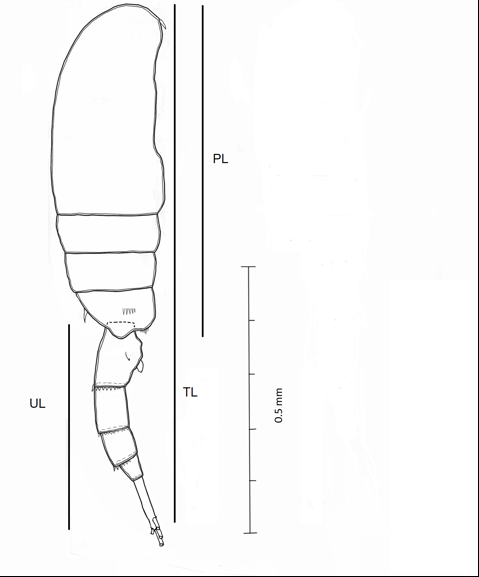VOLUME 10 NUMBER 1 (January to June 2017)

Philipp. Sci. Lett. 2017 10 (1) 1-7
available online: March 14, 2017
*Corresponding author
Email Address: rspapa@ust.edu.ph
Received: 07 September 2015
Revised: 01 September 2016
Accepted: 04 September 2016
ARTICLE
The abundance and morphometric characteristics of the endemic Pseudodiaptomus brehmi Kiefer, 1938 (Copepoda: Calanoida: Pseudodiaptomidae) in Lake Taal (Luzon Is., Philippines)
¹Department of Biological Sciences
²Research Center for the Natural and Applied Sciences
³The Graduate School, University of Santo Tomas, Manila, Philippines
⁴National Museum of Natural History, Smithsonian Institution,
Washington, D.C., U.S.A.
Pseudodiaptomus brehmi Kiefer 1938 is a very rare freshwater calanoid copepod species, originally known only from the type locality from Lake Naujan, Mindoro Oriental, Mindoro Island, Philippines. Recent studies have documented its presence in Lake Taal, Luzon Island, where it coexists with the invasive freshwater diaptomid Arctodiaptomus dorsalis (Marsh 1907). After numerous failed attempts to find P. brehmi from the type locality, it has been determined that it has been displaced by A. dorsalis, a global invader, making further studies on the Lake Taal population all the more important. This study was undertaken to study the population and morphometric characteristics of the different life stages of P. brehmi which were measured for individuals collected in 2009, when very intensive aquaculture occurred in the lake up until 2013, five years after the management and reduction of fish cage culture. This investigation of Lake Taal revealed that some morphometric measurements of P. brehmi populations during 2009 and 2013 did not vary in terms of size but population size and reproductive characteristics such as egg diameter and egg sac length varied even though their relative abundance was low compared to that of A. dorsalis. All life stages of P. brehmi have been noted throughout the year for both 2009 and 2013. Their continued survival in spite of the presence of the invasive diaptomid species may be due to its more demersal habitat, and the fact that Lake Taal is approximately 4 times larger and deeper than Lake Naujan. The results also suggest that its population density has not changed, even though there was a reduction in the intensity of aquaculture practices, nutrient levels and water quality of the lake has not improved. This is the only species of the genus Pseudodiaptomus reported from a freshwater lake, other species in the genus have been reported from low salinity rivers and estuaries to hypersaline conditions worldwide.
© 2025 SciEnggJ
Philippine-American Academy of Science and Engineering